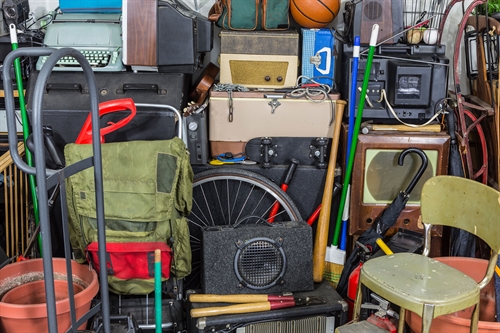Good packing can make your self-storage unit so much easier to use. Effective packing will help to prevent damage to your stored domestic goods. It can also make it easier to find a particular item. And by making best use of the space in your storage unit or locker, you can keep your monthly self-storage bills down.
Here are some pointers for effective packing in a storage locker.
Where to start with packing a storage unit
The first items that go into your storage unit will be the last items to come out. It makes sense to put things you won’t want to take out in the near future right at the back.
Heavier items should go at the bottom of your storage unit, otherwise they could crush things placed underneath. And keep weighty boxes low down, as heavy items stored high up are difficult to access safely.
For maximum efficiency, packing your storage unit starts when you pack your van or car. Put items that will go at the back of your storage unit closest to the doors of your transport so they are unloaded first. When you buy self-storage insurance from Store and Insure, your stuff is insured while in transit between your home and your storage unit. Get a quick quote to see how much you should be paying for storage insurance.
Make a self-storage inventory
A self-storage inventory is a list of everything you have in your storage unit. This list will help you to work out the value of your stored goods for insurance purposes. It can also act as a map to help you find items in your storage unit.
An inventory can also help you to calculate how much space you need. Some storage companies have on their websites a feature that will calculate the amount of space needed to store a list of items.
Stick a label on it
Labelling stored boxes will make your life so much easier. Most people forget very quickly what they have in storage, so labelling helps with finding stored goods. As well as giving you an idea of the contents, a label will tell you roughly how heavy the container is.
Be creative with packing materials and containers
If it’s got space inside, you can store stuff in it! Use stored furniture to hold other stored items. Bedding and textiles can make great padding for fragile items. You can even put things inside a fridge as long as it’s clean and dry inside.
Where to get boxes and storage containers
You can quite often get packing boxes for free from friends who have just moved house, or from shops and businesses. Remember, though, that very large boxes are awkward and heavy to move and store. You may end up underfilling them to keep the weight down, which wastes space. Choosing containers of a uniform size makes it easier to stack your stored goods efficiently in the space you have.
Some bulky, high-volume items like duvets and bedding could be packed into a vacuum bag using a hoover to suck out air. This saves space and makes them easier to handle. Check out our post on vacuum packing to learn more.
Take larger furniture apart to maximise space
Dissembling larger bits of furniture can help with packing your storage unit more efficiently. We’ve got a post about how to take down flatpack furniture. You can also store some items in an unusual configuration – for example, put a table on its side if that will fit better into your space. However, some things, particularly white goods, should only be stored in their intended configuration.
Clever hacks for packing a self-storage unit
We hope these tips will help you to use your storage unit more effectively and efficiently. While you’re thinking about storage, why not get a quote on our self-storage insurance to ensure you’re not overpaying.




